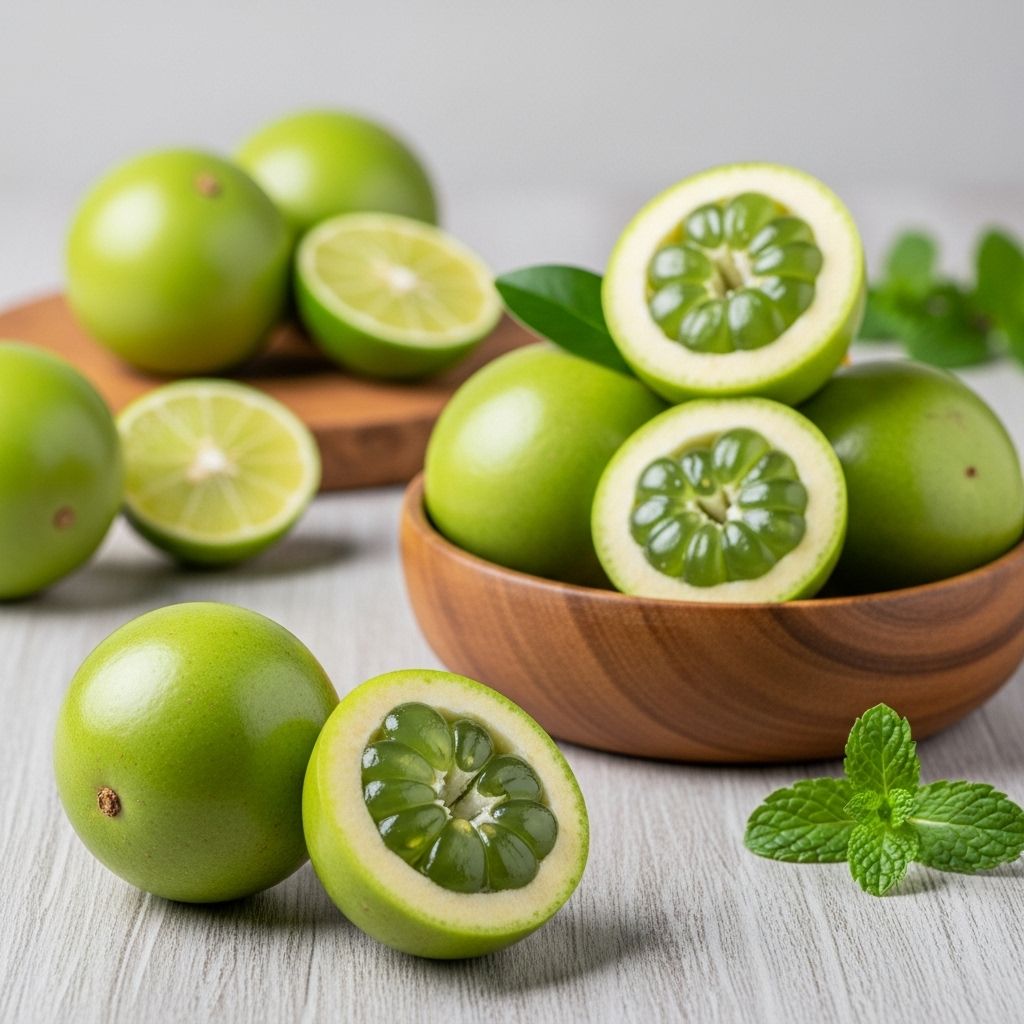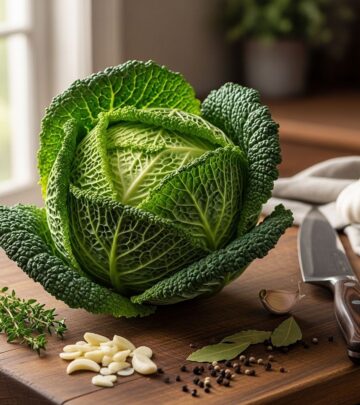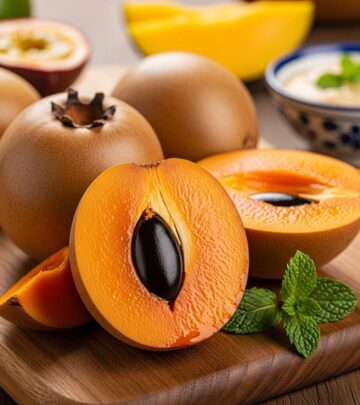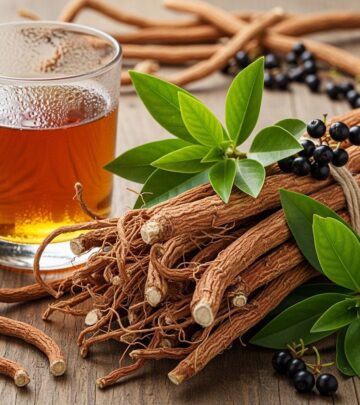Lulo Fruit: Benefits, Nutrition, Uses, and More
A tangy superfruit that boosts immunity, supports digestion and sparks recipe ideas.

Lulo fruit—also known as naranjilla—delights with its tangy, citrus-sweet flavor and comes packed with nutrients. Native to the misty valleys of the Andes, lulo is both a cultural staple and a rising star in superfruit circles. In this comprehensive guide, we’ll explore lulo’s rich background, composition, health potential, ways to enjoy it, and essential facts you should know.
What Is Lulo Fruit?
Lulo (Solanum quitoense), also called naranjilla (meaning ‘little orange’ in Spanish), is an exotic tropical fruit belonging to the Solanaceae (nightshade) family, making it a relative of tomatoes and eggplants. Though its vibrant orange skin resembles a tomato or persimmon, only the juicy, greenish-yellow pulp inside is eaten.
- Origin: Native to the Andes regions of Colombia, Ecuador, and Peru; now also grown in Panama and Costa Rica.
- Botanical Features: Lulo grows on tall shrubs or small trees, often bearing delicate, short-lived fruits with a fuzzy exterior and thin skin.
- Seasonality: Harvested mainly from December to March in the Southern Hemisphere.
- Name variations: Lulo (Colombia), Naranjilla (Ecuador, Peru), “nectar of the gods”.
The fruit is valued both for its refreshing tartness and its versatility in food and drinks.
Lulo Fruit Nutrition Information
Lulo is lauded for its nutrient density, housing a wealth of vitamins, minerals, and antioxidants. Though nutritional values can differ by region and growing conditions, a standard nutrient profile for lulo (per 100g) includes:
| Nutrient | Amount (per 100g) |
|---|---|
| Calories | Around 25–35 kcal |
| Vitamin C | ~28 mg (35% DV) |
| Vitamin A | ~2% DV |
| Vitamin B6 | ~5% DV |
| Vitamin K | Present |
| Calcium | ~10 mg |
| Iron | ~0.5 mg |
| Phosphorus | ~12 mg |
| Magnesium | ~14 mg |
| Sodium | ~1 mg |
| Potassium | ~200 mg |
| Zinc | Trace amounts |
| Fiber | ~2–3 g |
- Low in Calories and fat
- High in Vitamin C for immune support
- Good source of fiber for digestive health
- Provides minerals essential for heart and bone health
What Does Lulo Fruit Taste Like?
Lulo is celebrated for its complex, tropical-tart flavor. Its taste is commonly described as:
- A lively blend of lime and lemon with a touch of pineapple and kiwi.
- Some also note hints of rhubarb, and an undertone similar to gooseberry.
- Highly acidic and astringent when eaten alone, so sugar or sweetener is often added for balance.
The texture is jelly-like with a juicy pulp divided into several segments, each filled with crunchy but edible seeds. The exterior is not consumed and can sometimes be fuzzy or prickly.
Health Benefits of Lulo Fruit
Lulo’s rich nutrient and antioxidant content offer several potential health benefits:
- Boosts Immunity: Its high Vitamin C content helps strengthen immune defenses and counter oxidative stress.
- Aids Digestion: Dietary fiber supports gut health, regularity, and feeds beneficial gut bacteria.
- Supports Heart Health: Potassium regulates blood pressure, and antioxidants may help reduce cholesterol.
- Supports Weight Management: Its low calorie count and fiber make it a smart snack for dieters.
- Promotes Healthy Skin: Vitamins A and C in lulo contribute to collagen production and a radiant complexion.
- Potential Anti-Inflammatory Action: Antioxidants like polyphenols and carotenoids may help reduce inflammation.
While promising, it’s important to note that most lulo research has been conducted in laboratory or animal settings; more human studies are needed for confirmation.
Lulo Fruit Uses: Culinary Applications
Lulo is enjoyed in a variety of ways across South America, both fresh and in processed forms:
- Raw: Scooped and eaten fresh with sugar or honey to mellow the tartness.
- Juices & Beverages:
- Lulada – Colombian cold drink with mashed lulo pulp, lime, sugar, and ice.
- Champús – Traditional Andean drink including lulo, pineapple, citrus, corn, panela, cinnamon, and cloves.
- Popular in smoothies, cocktails, and mocktails—pairs especially well with rum, tequila, or vodka.
- Desserts: Used in ice cream, popsicles, custards (such as esponjados de lulo), jellies, and sauces.
- Baking & Cooking: Makes a tangy filling for tarts or cakes and a zesty addition to salsas and preserves.
- Preserves & Sauces: Processed into jams, hot sauces, and syrup for year-round enjoyment.
Due to its delicate structure and short shelf life, lulo is frequently exported as frozen pulp or concentrate.
How To Eat Lulo Fruit: Preparation Tips
If you’re lucky enough to find fresh lulo, here’s how to prepare it:
- Wash the fruit to remove any fuzz or surface hairs.
- Cut the fruit in half crosswise—it resembles a small tomato inside.
- Scoop out the greenish pulp with a spoon; discard the skin.
- Add sweetener if desired, or blend with other fruits for a flavorful juice or smoothie.
Lulo pulp can also be used as an ingredient in sauces, desserts, or savory dishes—its acidity complements both sweet and salty flavors.
How to Make Lulo Juice (Lulada) – A Simple Recipe
Refreshing lulada is one of the most beloved ways to enjoy lulo fruit:
- 4 ripe lulo fruits
- 2–3 tablespoons sugar (or to taste)
- Juice of 1 lime
- 2 cups chilled water
- Plenty of ice cubes
Instructions:
- Halve the lulo fruits and scoop out the pulp into a bowl.
- Add sugar and lime juice, then mash lightly to blend flavors.
- Pour in the water and stir thoroughly.
- Add ice and serve in tall glasses, garnishing with fresh mint or a lime wedge if desired.
You can also add a splash of rum or vodka for a spirited twist.
Where to Buy Lulo Fruit
Fresh lulo is primarily available in its native regions (Colombia, Ecuador, Peru). Its fragility limits widespread, fresh exports. However, you can often find lulo pulp, purees, or juices (sometimes labeled as “naranjilla”) at Latin American and specialty grocery stores, and from online retailers in North America and Europe.
- Look for frozen pulp in specialty aisles or international markets.
- Processed forms (such as juice, jam, and syrup) have a much longer shelf life.
- If growing your own, lulo shrubs thrive in humid, shaded environments and require protection from frost and wind.
Possible Side Effects and Precautions
Lulo is generally safe for most individuals when eaten in normal amounts. However, keep the following in mind:
- Allergies: As a member of the nightshade family, those allergic to related fruits or vegetables (like tomatoes or eggplant) should use caution.
- Digestive Sensitivity: Its acidity and fiber may cause mild stomach upset in those sensitive to citrus fruits or high-fiber foods.
- Pregnancy & Medication: There is no substantial evidence on lulo’s effects for pregnant or breastfeeding women, or interactions with medication. Consult with a healthcare provider if unsure.
Fun Facts About Lulo Fruit
- Lulo is known as the “nectar of the gods” in some regions due to its exceptional taste.
- In traditional Colombian and Ecuadorian cuisine, lulo-based drinks are centerpieces at parties and social gatherings.
- Its short shelf life and sensitivity to bruising have prevented large-scale global cultivation.
- It grows on shrubs that can reach over 3 meters (10 feet) tall and can yield over a hundred fruits per season.
- Lulo pulp’s green color can turn beverages an eye-catching shade of neon (despite the orange exterior) .
Comparing Lulo to Other Tropical Fruits
| Fruit | Flavor Profile | Main Benefits |
|---|---|---|
| Lulo (Naranjilla) | Tart, citrusy, pineapple, kiwi, rhubarb | Rich in vitamin C, fiber, antioxidants |
| Passionfruit | Sour-sweet, aromatic, floral | Vitamins A & C, fiber, polyphenols |
| Camu Camu | Very sour, berry-like | Extremely high vitamin C, immune support |
| Açaí | Earthy, rich, berry-chocolate | Antioxidants, omega-3, fiber |
Frequently Asked Questions (FAQs) About Lulo Fruit
Q: What is the difference between lulo and naranjilla?
A: There is no difference—”lulo” is the Colombian name, while “naranjilla” is the term used in Ecuador and Peru for the same fruit.
Q: Does lulo taste more like a lemon, an orange, or something else?
A: Lulo’s flavor is most closely compared to lime or kiwi due to its tartness, but it’s also layered with hints of pineapple, rhubarb, and subtle sweetness.
Q: Where can I buy lulo fruit outside South America?
A: You may find lulo pulp, juices, or preserves (sometimes labeled as naranjilla) at Latin markets, specialty food stores, or online, though fresh fruit is rare due to its fragility.
Q: Can you eat lulo seeds?
A: Yes, the tiny seeds inside the edible pulp are typically consumed along with the flesh and add a subtle crunch.
Q: Are there any health risks to eating lulo?
A: Lulo is safe for most people, though those with allergies to nightshade family plants or sensitive digestive systems should use caution.
Q: Can you grow lulo at home?
A: Lulo can be grown from seeds in warm, humid, and frost-free environments but is prone to disease and requires care to thrive.
References
- Tasting Table: Colombia’s Lulo Is A Must-Try For All The Citrus Fruit Lovers
- Fierce Fruit: Inside Fierce Fruit: Introducing the Lulo (Naranjilla Fruit)
References
- https://www.tastingtable.com/1380748/lulo-colombian-citrus-fruit/
- https://fiercefruit.com/blogs/blog/inside-fierce-fruit-introducing-the-lulo-naranjilla-fruit
- https://thefoodhog.com/lulo-fruit-naranjilla/
- https://flavorsofbogota.com/lulo-colombia-fruit/
- https://www.growables.org/information/TropicalFruit/Naranjilla.htm
- https://miamifruit.org/blogs/news/lulo-aka-naranijilla-is-back-in-season
- https://www.epicgardening.com/naranjilla-lulo-shrub/
- https://fruit.fandom.com/wiki/Lulo
- https://www.stylecraze.com/articles/lulo-fruit/
Read full bio of medha deb












